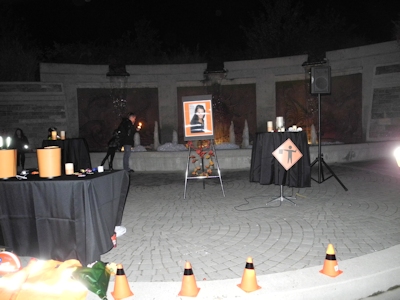Critical Incident Stress and the OFA Attendant
 The need and importance for OFA Attendants has not faded over the years in British Columbia. As of April 1997 there were 105,902 certified OFAAs in B.C. In that year there were approximately 216 work-related fatalities; 17,250 workers permanently disabled; and 281,000 workers injured severely enough for compensation claims. According to the Workers' Compensation Board of British Columbia (WCB) over 6 million first aid treatments are rendered by OFA Attendants each year in the workplace (WCB, 1990). For many others, countless first aid related incidents have occurred outside work as well.
The need and importance for OFA Attendants has not faded over the years in British Columbia. As of April 1997 there were 105,902 certified OFAAs in B.C. In that year there were approximately 216 work-related fatalities; 17,250 workers permanently disabled; and 281,000 workers injured severely enough for compensation claims. According to the Workers' Compensation Board of British Columbia (WCB) over 6 million first aid treatments are rendered by OFA Attendants each year in the workplace (WCB, 1990). For many others, countless first aid related incidents have occurred outside work as well.
The training of OFAAs allows businesses and industries to provide a unique service by providing emergency pre-hospital care to injured workers. Unfortunately, for some Attendants the realities of dealing with human suffering and death exact a toll on their personal lives emotionally, physically and socially. As well trained as OFA Attendants may be in helping others they are rarely, if ever, taught how to help themselves emotionally after a traumatic incident.
It can be argued as to whether or not the sterile environment of a first aid classroom and 8 to 70 hours of training is capable of preparing a person for the emotional stresses of a traumatic incident. We do feel it is important to remind Attendants that real patients are frequently not as clean, unmarked and calm as their fellow trainee; do not remain quiet when being treated; do not unconsciously help the Attendant roll themselves from prone to supine or from supine to lateral and back; and of countless other differences that cannot be duplicated as realistically in a classroom.
In 1983 Dr. Jeffrey T. Mitchell, a former fire-fighter/paramedic, introduced Critical Incident Stress Debriefing (CISD) for emergency service personnel as a way of understanding the stresses involved in dealing with traumatic events. It has now evolved into a Critical Incident Stress Management focus which has encompassed more of a proactive approach, like pre-incident education, in dealing with Emergency Services stresses not unlike those faced by individuals who provide Occupational First Aid in British Columbia. The issues of CIS are increasingly paramount with the passing of each on- or off-duty traumatic occurrence dealt with by an OFA Attendant.